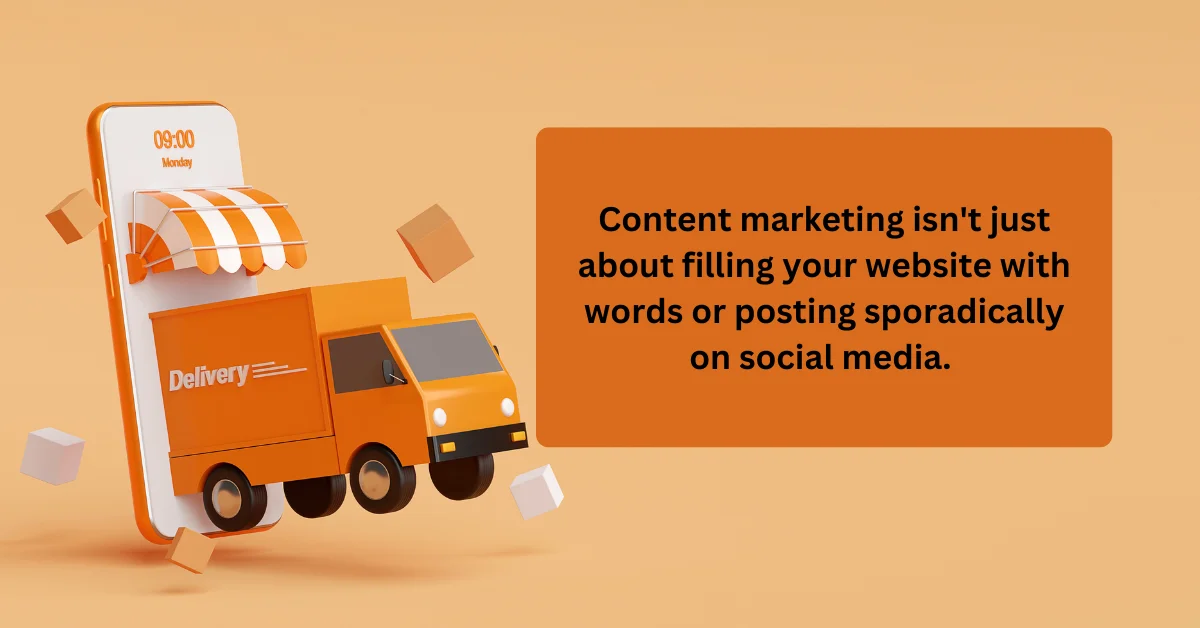In today’s fast-paced digital world, mobile devices have become an integral part of our daily lives. From checking emails and social media to shopping online, smartphones and tablets have revolutionized how we interact with the internet. For e-commerce businesses, this shift towards mobile usage presents both an opportunity and a challenge. Mobile e-commerce, also known as m-commerce, is rapidly growing, with more consumers opting to shop from the convenience of their mobile devices.
Recent statistics show that more than half of all online shopping traffic comes from mobile devices. With this trend expected to rise even further, businesses must optimize their e-commerce websites for mobile users to stay competitive. Failing to do so can result in lost sales, poor user experiences, and decreased customer retention.
This blog will explore the essential strategies for making your e-commerce website mobile-friendly, ensuring you deliver a seamless shopping experience to your customers on any device. From implementing responsive web design to simplifying the checkout process, we’ll cover all the necessary steps to optimize your site for mobile users and boost your sales in today’s mobile-first world.
Understanding Mobile E-commerce
Mobile e-commerce, or m-commerce, refers to buying and selling products and services through mobile devices like smartphones and tablets. This form of e-commerce has gained tremendous traction in recent years, driven by the increasing penetration of mobile devices and the convenience they offer to users. Unlike traditional desktop shopping, mobile e-commerce allows consumers to browse, compare, and purchase products anytime, anywhere, making it an indispensable part of the modern retail landscape.
The mobile shopping experience differs significantly from desktop shopping. Mobile users often have different expectations and behaviors—they are usually on the go, multitasking, and seeking quick, efficient shopping experiences. This means that an e-commerce site that is not optimized for mobile can frustrate users, leading to high bounce rates and abandoned carts. In contrast, a mobile-optimized site can enhance user satisfaction, drive more sales, and build long-term customer loyalty.
Optimizing your e-commerce website for mobile isn’t just about ensuring it looks good on smaller screens. It’s about creating a user experience that is intuitive, fast, and seamless. Research shows that over 70% of mobile users are more likely to abandon a site if it takes too long to load, and nearly 60% will not recommend a business with a poorly designed mobile site. Furthermore, with Google’s shift to mobile-first indexing, mobile optimization has become crucial not only for user experience but also for SEO, directly impacting your site’s visibility on search engines.
In summary, mobile e-commerce is more than just a trend—it’s a necessity. Understanding its unique characteristics and optimizing your site accordingly will help you capture the growing market of mobile shoppers and stay ahead of your competition.
Essential Strategies for Mobile Optimization
Optimizing your e-commerce website for mobile users is crucial for providing an exceptional shopping experience and staying competitive in today’s market. Here are the essential strategies to ensure your website is mobile-friendly and optimized for mobile e-commerce success:
3.1. Responsive Web Design
Responsive web design is the cornerstone of any mobile optimization strategy. It ensures that your website automatically adjusts its layout and content to fit any screen size, providing a seamless experience across all devices—whether it’s a desktop, tablet, or smartphone. A responsive design eliminates the need for separate mobile and desktop versions of your site, saving time and resources while maintaining consistency.
To implement responsive web design effectively, focus on creating flexible layouts that adapt to various screen sizes and orientations. Use fluid grids, flexible images, and CSS media queries to ensure your site looks and functions well on all devices. Avoid common pitfalls like overloading the mobile version with too many elements or neglecting touch-friendly navigation. Instead, prioritize simplicity and user-friendliness to create a smooth, intuitive browsing experience.
3.2. Improve Page Load Speed
In the world of mobile e-commerce, speed is everything. Mobile users are often on the go and expect websites to load quickly. Research shows that if a mobile site takes longer than three seconds to load, over half of its visitors will abandon it. This makes page load speed a critical factor in optimizing your e-commerce site for mobile users.
To enhance load speed, start by optimizing images and videos, compressing files, and leveraging browser caching. Minifying CSS, JavaScript, and HTML can also reduce file sizes and improve load times. Additionally, consider using a Content Delivery Network (CDN) to distribute your site’s content across multiple servers worldwide, ensuring faster access for users regardless of their location. Regularly test your site’s speed using tools like Google PageSpeed Insights or GTmetrix, and continually refine your site to keep load times as low as possible.
3.3. Simplify Navigation and Design
Effective mobile optimization goes beyond just responsive design and speed—it also involves creating a simple and intuitive navigation system. Mobile screens are smaller, which means cluttered menus and complicated navigation can overwhelm users and lead to frustration. To avoid this, focus on simplifying your design and making navigation easy and accessible.
Use a clean, minimalist design that prioritizes essential elements and reduces visual noise. Implement a hamburger menu for easy access to your site’s main sections without taking up valuable screen space. Ensure all buttons and links are large enough for easy tapping, and avoid hover-dependent features that don’t translate well to touchscreens. By streamlining your site’s design and navigation, you’ll create a more enjoyable shopping experience that encourages users to stay longer and explore more.
3.4. Optimize Checkout Process
The checkout process is a critical component of the mobile shopping experience, and a cumbersome, lengthy process can lead to high cart abandonment rates. To optimize your e-commerce site for mobile users, you need to streamline the checkout process as much as possible.
Start by reducing the number of steps required to complete a purchase. Offer guest checkout options to avoid forcing users to create an account and ensure that your forms are easy to fill out on a mobile device. Use mobile-friendly payment options like digital wallets (Apple Pay, Google Pay, etc.) that allow for quick, secure transactions with just a few taps. Additionally, provide clear progress indicators and simplify error correction to minimize frustration during the checkout process.
3.5. Mobile-Optimized Content
Creating content specifically designed for mobile devices is another key strategy for mobile optimization. Mobile users prefer content that is concise, engaging, and easy to consume on smaller screens. To achieve this, write in short, punchy paragraphs and use bullet points to break up text. Choose readable fonts and ensure your text is large enough to be legible without zooming.
Incorporate mobile-specific features such as click-to-call buttons for immediate customer support and geolocation features to provide location-based offers or store information. These elements not only enhance the user experience but also increase engagement and conversion rates.
3.6. Utilize Mobile SEO Best Practices
Optimizing your e-commerce site for mobile users also involves employing mobile SEO best practices. With Google’s mobile-first indexing, your site’s mobile version is now the primary version considered for search engine rankings. This makes it essential to focus on mobile SEO to improve your site’s visibility and attract more mobile traffic.
Ensure your site is fully optimized for mobile search by using responsive design, improving load speeds, and creating mobile-friendly content. Additionally, optimize for local SEO to attract nearby customers by including location-specific keywords and creating a Google My Business profile. This will help you reach a wider audience and drive more traffic to your site.
Leveraging Mobile Apps for E-commerce
While having a mobile-optimized website is essential, many e-commerce businesses are also turning to mobile apps to enhance their user experience and drive customer loyalty. Mobile apps provide a more personalized and streamlined shopping experience than mobile websites, allowing businesses to offer unique features that can significantly improve engagement and conversion rates.
Benefits of Developing a Mobile App for Your E-commerce Store
Developing a mobile app for your e-commerce business has several advantages. First, mobile apps offer a faster and more reliable user experience. Unlike mobile websites, which rely on browser performance and internet connectivity, apps are built specifically for mobile devices and can store data locally. This enables quicker load times, smoother navigation, and a more responsive interface, all of which contribute to a better user experience.
Second, mobile apps provide a higher level of personalization. Apps can access device features like cameras, GPS, and contact lists, allowing businesses to offer personalized recommendations, location-based offers, and seamless integration with social media platforms. Push notifications, a powerful feature of mobile apps, can be used to send timely updates, promotions, and reminders directly to users’ devices, helping to keep your brand top-of-mind and encouraging repeat purchases.
Lastly, mobile apps often lead to higher conversion rates. According to recent studies, conversion rates on mobile apps are up to three times higher than on mobile websites. This is largely due to the more streamlined and user-friendly shopping experience that apps provide, as well as the trust and familiarity users develop with an app over time.
Integrating Your Mobile App with Your E-commerce Website
For businesses considering a mobile app, it’s crucial to ensure seamless integration with your existing e-commerce website. This means that product catalogs, user accounts, and order history should be synchronized between the app and the website, providing a cohesive experience across all platforms. An integrated approach allows customers to start shopping on one device and continue on another without any disruptions.
Furthermore, offering exclusive deals, loyalty programs, and app-specific features can incentivize customers to download and use your app, increasing user engagement and fostering brand loyalty. By leveraging data collected through the app, you can gain valuable insights into customer behavior and preferences, enabling you to tailor your marketing strategies and improve your overall customer experience.
Strategies to Increase App Adoption and Usage
To maximize the benefits of your mobile app, it’s important to encourage users to download and actively use it. Start by promoting your app through various channels, including your website, social media, and email campaigns. Highlight the unique features and benefits of your app, such as faster checkout, personalized recommendations, and exclusive discounts.
You can also incentivize app downloads with special offers, such as a discount on the first purchase made through the app or a free gift for new users. Additionally, use push notifications strategically to re-engage users who haven’t visited your app recently, reminding them of abandoned carts, ongoing sales, or new arrivals.
By effectively leveraging a mobile app alongside your mobile-optimized website, you can provide a superior shopping experience, boost customer engagement, and increase sales, ultimately driving the success of your e-commerce business.
Testing and Continuous Improvement
In the dynamic world of mobile e-commerce, testing and continuous improvement are essential to maintaining a competitive edge. As technology evolves and user expectations change, it is crucial to regularly assess your mobile site’s performance and user experience to identify areas for improvement. By adopting a proactive approach to optimization, you can ensure that your e-commerce website remains efficient, user-friendly, and aligned with the latest trends and technologies.
Importance of Regular Testing
Regular testing is a cornerstone of effective mobile optimization. It helps you detect issues that might impact user experience, such as slow load times, broken links, or unresponsive elements. By continuously monitoring your site’s performance, you can quickly address these issues before they lead to lost sales or frustrated customers.
User testing is one of the most valuable methods for assessing your mobile site’s usability. By observing real users as they navigate your site, you can gain insights into how they interact with different elements and where they might encounter difficulties. A/B testing is another powerful tool that allows you to experiment with various design elements, content layouts, and features to determine what works best for your audience.
Performance testing is equally important, as it ensures your site loads quickly and functions smoothly on all devices. Utilize tools like Google PageSpeed Insights, GTmetrix, and Pingdom to evaluate your site’s speed and performance metrics. Regularly check for issues such as large image files, excessive JavaScript, or server response times that could slow down your site and negatively impact user experience.
Tools and Methods for Testing Mobile E-commerce Websites
Several tools and methods can help you test and improve your mobile e-commerce website:
- Google Analytics: Provides detailed insights into user behavior, including how visitors interact with your mobile site, which pages they visit, and where they drop off. This data can help you identify problem areas and prioritize improvements.
- Heatmaps: Tools like Hotjar and Crazy Egg provide visual representations of user interactions, showing you where users click, scroll, and hover on your mobile site. This information can help you optimize your layout and navigation for better user engagement.
- Mobile Emulators: Emulators like BrowserStack and Google’s Mobile-Friendly Test allow you to see how your site looks and functions on various mobile devices. This is useful for identifying device-specific issues and ensuring a consistent experience across all platforms.
- User Feedback: Encouraging customers to provide feedback through surveys, reviews, or direct comments can give you valuable insights into their experiences and expectations. Use this feedback to make targeted improvements that enhance user satisfaction.
Encouraging Customer Feedback for Enhancing Mobile Experience
Customer feedback is a powerful tool for continuous improvement. It provides direct insights into what users like and dislike about your mobile site, highlighting specific areas where enhancements are needed. Implementing a feedback loop where customers can easily share their thoughts can help you stay attuned to their needs and preferences.
Consider integrating in-app surveys or post-purchase emails requesting feedback. Offer incentives, such as discounts or loyalty points, to encourage participation. Analyzing customer feedback alongside performance data will give you a comprehensive understanding of your site’s strengths and weaknesses, enabling you to make informed decisions about future optimizations.
By consistently testing your mobile e-commerce website and leveraging customer feedback, you can adapt to changing market trends, enhance the user experience, and maintain a strong competitive position. Continuous improvement is not just about fixing what’s broken—it’s about striving for excellence and delivering the best possible shopping experience to your customers.
Conclusion
Optimizing your e-commerce website for mobile users is no longer a choice—it’s a necessity in today’s digital marketplace. With more consumers shopping from their mobile devices than ever before, ensuring a seamless, user-friendly experience on smartphones and tablets can significantly impact your business’s success.
By implementing the strategies discussed in this blog, such as responsive web design, improving page load speed, simplifying navigation, optimizing the checkout process, creating mobile-optimized content, and leveraging mobile SEO best practices, you can create a mobile e-commerce site that not only meets but exceeds customer expectations. Additionally, considering the development of a mobile app can further enhance the shopping experience and foster customer loyalty.
However, the journey doesn’t end there. Continuous testing and improvement are vital to keeping your site competitive and aligned with evolving user preferences and technological advancements. By regularly assessing your site’s performance, utilizing user feedback, and staying updated on the latest mobile trends, you can ensure your e-commerce website remains a leader in the mobile marketplace.
As mobile usage continues to grow, businesses that prioritize mobile optimization will be better positioned to capture this expanding market. Start implementing these strategies today, and watch your mobile e-commerce sales soar!














